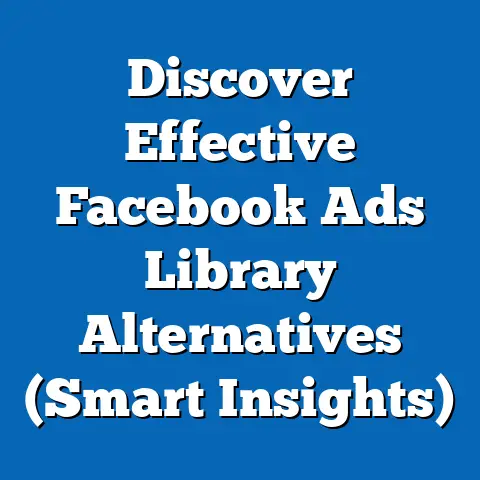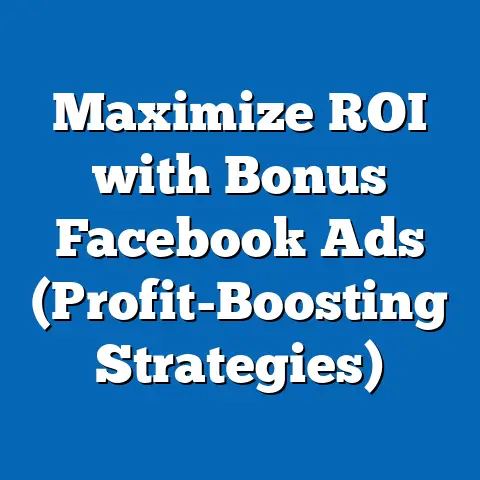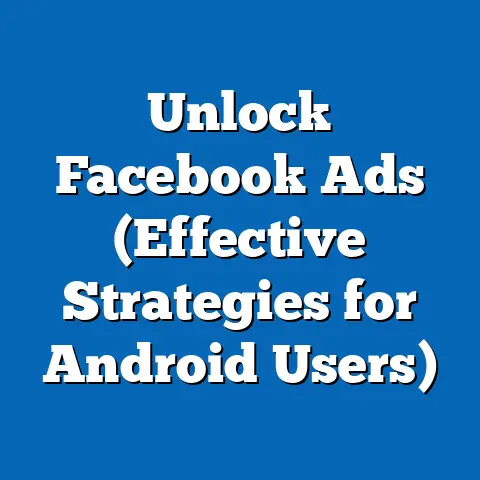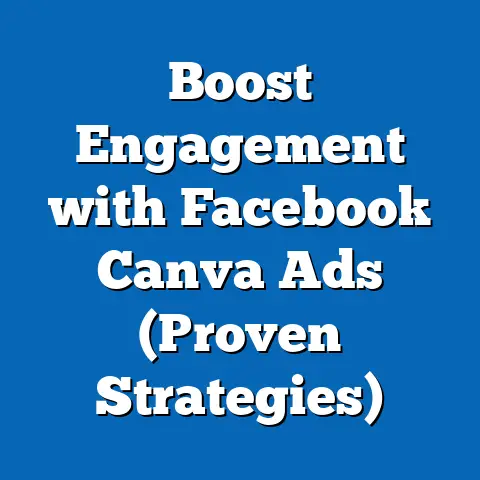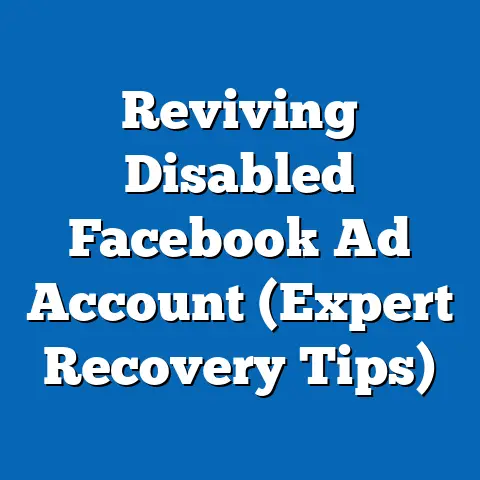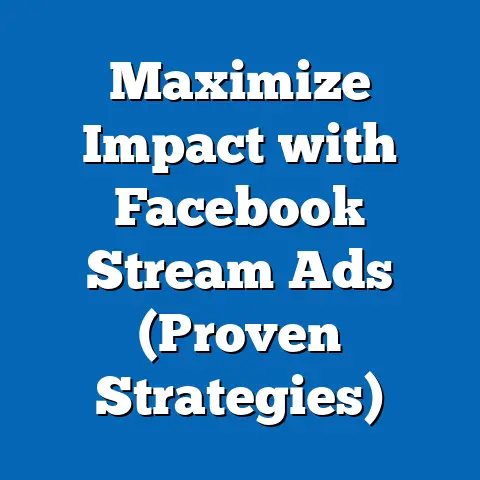Cara Beriklan di Facebook Ads (Proven Strategies for Success)
Advertising has been around for centuries, evolving alongside human civilization. From town criers announcing the latest wares to the elaborate print ads of the early 20th century, businesses have always sought ways to reach potential customers. The advent of television brought a new era of visual storytelling and mass marketing. But the digital revolution truly transformed the advertising landscape. And platforms like Facebook? They’ve completely rewritten the rules.
I remember when Facebook first rolled out its advertising platform. Initially, it felt clunky and limited. But even then, I saw the potential. The ability to target specific demographics, interests, and behaviors was a game-changer. Now, years later, Facebook Ads has matured into a sophisticated and powerful tool. It offers businesses unprecedented access to targeted audiences, making it an essential component of any modern marketing strategy.
Understanding Facebook Ads
At its core, Facebook Ads is a system that allows businesses to display advertisements to Facebook users. However, it’s far more than just a simple ad display network. The platform offers a wide array of features and functionalities that enable precise targeting, creative customization, and performance tracking.
Here’s a breakdown of the core components:
- Ad Formats: Facebook supports various ad formats to suit different marketing objectives. These include:
- Image Ads: Simple and effective, image ads are ideal for showcasing products or services with compelling visuals.
- Video Ads: Engaging and dynamic, video ads can capture attention and tell a story.
- Carousel Ads: Allow users to scroll through multiple images or videos, perfect for showcasing a range of products or highlighting different features.
- Collection Ads: Designed for e-commerce businesses, collection ads display a catalog of products with a focus on visual appeal.
- Lead Ads: Streamline lead generation by allowing users to submit their information directly within the ad.
- Targeting Options: This is where Facebook Ads truly shines. You can target users based on a wide range of criteria, including:
- Demographics: Age, gender, location, education, and more.
- Interests: Hobbies, passions, and activities that users have expressed interest in.
- Behaviors: Purchase history, online activity, and other behaviors that indicate user preferences.
- Custom Audiences: Upload your own customer data to target existing customers or create Lookalike Audiences (more on that later).
- Budget Settings: You have full control over your ad spend. You can set daily or lifetime budgets and choose from various bidding strategies to optimize your campaigns.
- Image Ads: Simple and effective, image ads are ideal for showcasing products or services with compelling visuals.
- Video Ads: Engaging and dynamic, video ads can capture attention and tell a story.
- Carousel Ads: Allow users to scroll through multiple images or videos, perfect for showcasing a range of products or highlighting different features.
- Collection Ads: Designed for e-commerce businesses, collection ads display a catalog of products with a focus on visual appeal.
- Lead Ads: Streamline lead generation by allowing users to submit their information directly within the ad.
- Demographics: Age, gender, location, education, and more.
- Interests: Hobbies, passions, and activities that users have expressed interest in.
- Behaviors: Purchase history, online activity, and other behaviors that indicate user preferences.
- Custom Audiences: Upload your own customer data to target existing customers or create Lookalike Audiences (more on that later).
The Facebook Ads Manager is your central command center for all things advertising. It’s where you create, manage, and track your campaigns. It can be a little overwhelming at first, but with a bit of practice, you’ll become familiar with its layout and functionalities.
What makes Facebook Ads so powerful? It’s the combination of a massive user base and incredibly sophisticated targeting capabilities. With billions of active users, Facebook provides access to a vast pool of potential customers. And with its granular targeting options, you can ensure that your ads are seen by the people most likely to be interested in your products or services.
Key Takeaway: Understanding the core components of Facebook Ads is crucial for creating effective campaigns. Take the time to explore the different ad formats, targeting options, and budget settings to find the best fit for your business.
Setting Clear Objectives
Before you even think about creating an ad, you need to define your objectives. What do you want to achieve with your Facebook Ads campaign? Are you looking to increase brand awareness, drive traffic to your website, generate leads, or boost sales?
Setting clear, measurable objectives is essential for several reasons:
- It provides direction: Objectives give your campaigns a clear purpose, guiding your targeting, creative, and budget strategies.
- It allows for measurement: Measurable objectives enable you to track your progress and determine whether your campaigns are successful.
- It facilitates optimization: By analyzing your results against your objectives, you can identify areas for improvement and optimize your campaigns for better performance.
Facebook Ads offers a range of campaign objectives to choose from, each designed to achieve specific outcomes:
- Awareness: Increase brand awareness and reach a wider audience.
- Traffic: Drive traffic to your website or app.
- Engagement: Encourage interactions with your content, such as likes, comments, and shares.
- Leads: Generate leads by collecting contact information from potential customers.
- App Promotion: Promote your mobile app and drive downloads.
- Sales: Increase online sales or conversions.
The objective you choose should align with your overall business goals. For example, a new business might focus on brand awareness to establish a presence in the market. An e-commerce business might prioritize sales to drive revenue.
Let’s look at some examples:
- Local Restaurant: Objective: Drive foot traffic to the restaurant. Metrics: Reach, website clicks, call clicks, location clicks.
- E-commerce Store: Objective: Increase online sales. Metrics: Conversion rate, cost per purchase, return on ad spend (ROAS).
- Software Company: Objective: Generate leads for demo requests. Metrics: Lead form submissions, cost per lead, lead quality.
I’ve seen countless businesses waste money on Facebook Ads because they didn’t have a clear understanding of their objectives. They launched campaigns without a specific goal in mind and ended up with disappointing results. Don’t make the same mistake!
Key Takeaway: Before launching any Facebook Ads campaign, take the time to define your objectives. Make sure they are clear, measurable, and aligned with your overall business goals.
Audience Targeting Strategies
This is where the magic of Facebook Ads truly happens. The platform’s targeting capabilities are incredibly powerful, allowing you to reach specific groups of people with tailored messages.
Here are some of the key targeting options:
- Demographic Targeting: Target users based on age, gender, location, education, relationship status, and more. This is a foundational targeting method that can help you narrow down your audience.
- Interest-Based Targeting: Target users based on their interests, hobbies, and passions. Facebook gathers this information from users’ profiles, the pages they like, and the content they engage with. This allows you to reach people who are genuinely interested in your products or services.
- Behavioral Targeting: Target users based on their purchase history, online activity, and other behaviors. This can be particularly useful for reaching people who are likely to be interested in specific types of products or services.
- Custom Audiences: This is where things get really interesting. Custom Audiences allow you to upload your own customer data (e.g., email addresses, phone numbers) to target existing customers or create Lookalike Audiences.
- Lookalike Audiences: Facebook analyzes your existing customer data to identify users who share similar characteristics, interests, and behaviors. This allows you to reach new potential customers who are likely to be interested in your products or services.
Creating buyer personas is an essential step in developing effective targeting strategies. A buyer persona is a fictional representation of your ideal customer. It includes details about their demographics, interests, behaviors, motivations, and pain points.
By understanding your target audience at a deeper level, you can create more relevant and engaging ads that resonate with them.
Retargeting is another powerful strategy that allows you to reach people who have previously interacted with your brand. This could include people who have visited your website, viewed your products, or engaged with your social media content.
Retargeting ads are often highly effective because they target people who are already familiar with your brand and have shown some level of interest in your products or services.
I remember working with a client who was struggling to generate leads for their software product. We implemented a retargeting campaign that targeted people who had visited their website but hadn’t filled out a lead form. The results were remarkable. The retargeting ads generated a significant increase in leads at a much lower cost than their traditional advertising campaigns.
Key Takeaway: Audience targeting is crucial for the success of your Facebook Ads campaigns. Take the time to understand your target audience, create buyer personas, and leverage the various targeting options available on Facebook to reach the right people with the right message.
Crafting Compelling Ad Creatives
Even with the best targeting in the world, your ads won’t be effective if they don’t capture attention and engage your audience. That’s why crafting compelling ad creatives is so important.
Here are some tips for designing effective ad images and videos:
- Use high-quality visuals: Your images and videos should be clear, crisp, and visually appealing. Avoid using blurry or pixelated images.
- Focus on your target audience: Choose visuals that resonate with your target audience and reflect their interests and values.
- Showcase your product or service: Highlight the key features and benefits of your product or service.
- Use eye-catching colors and designs: Experiment with different colors and designs to see what works best for your audience.
- Keep it short and sweet: Attention spans are short, so keep your videos concise and to the point.
Writing compelling ad copy is just as important as creating visually appealing visuals. Here are some tips for writing effective ad copy:
- Know your audience: Tailor your message to your target audience and address their specific needs and pain points.
- Highlight the benefits: Focus on the benefits of your product or service, rather than just the features.
- Use strong call-to-action (CTA) buttons: Tell users exactly what you want them to do, such as “Learn More,” “Shop Now,” or “Sign Up.”
- Keep it concise and easy to read: Use clear and simple language that is easy to understand.
- Use a sense of urgency: Create a sense of urgency to encourage users to take action.
A/B testing is a powerful technique for optimizing your ad creatives. It involves creating multiple versions of your ads and testing them against each other to see which performs best.
By A/B testing different images, videos, headlines, and ad copy, you can identify the elements that resonate most with your audience and optimize your ads for better performance.
Aligning your ad message with audience expectations is crucial for building trust and credibility. Your ads should accurately represent your product or service and deliver on the promises you make.
Avoid using misleading or deceptive advertising practices, as this can damage your brand reputation and alienate potential customers.
Key Takeaway: Compelling ad creatives are essential for capturing attention and engaging your audience. Focus on creating high-quality visuals, writing compelling ad copy, and aligning your message with audience expectations.
Budgeting and Bidding Strategies
Setting a realistic budget is crucial for maximizing your ROI. You don’t want to overspend and waste money, but you also don’t want to underspend and miss out on potential opportunities.
Facebook Ads offers two main budgeting options:
- Daily Budget: Set a fixed amount that you’re willing to spend each day.
- Lifetime Budget: Set a total amount that you’re willing to spend over the entire duration of your campaign.
The best option for you will depend on your specific goals and circumstances. Daily budgets are generally better for ongoing campaigns, while lifetime budgets are better for campaigns with a specific end date.
Facebook Ads also offers various bidding strategies to help you optimize your ad spend. These include:
- Automatic Bidding: Facebook automatically sets your bids to get you the most results for your budget.
- Manual Bidding: You set your bids manually, giving you more control over your ad spend.
Automatic bidding is a good option for beginners, while manual bidding is better for experienced advertisers who want more control over their campaigns.
Monitoring your ad performance is essential for optimizing your budget and bidding strategies. Keep a close eye on your key metrics, such as click-through rates, conversion rates, and return on ad spend (ROAS).
If you see that your ads are not performing well, you can adjust your budget, bidding strategies, or targeting options to improve your results.
Key Takeaway: Budgeting and bidding strategies are crucial for maximizing your ROI. Set a realistic budget, choose the right bidding strategy, and monitor your ad performance to optimize your ad spend.
Analyzing and Optimizing Campaign Performance
Analyzing your campaign performance is essential for identifying areas for improvement and optimizing your ads for better results.
Here are some of the key metrics to track:
- Reach: The number of unique people who saw your ads.
- Impressions: The number of times your ads were displayed.
- Click-Through Rate (CTR): The percentage of people who clicked on your ads.
- Conversion Rate: The percentage of people who took a desired action after clicking on your ads (e.g., making a purchase, filling out a lead form).
- Cost Per Click (CPC): The average cost you paid for each click on your ads.
- Cost Per Conversion (CPC): The average cost you paid for each conversion.
- Return on Ad Spend (ROAS): The amount of revenue you generated for every dollar you spent on ads.
By analyzing these metrics, you can identify trends and areas for improvement. For example, if your CTR is low, you might need to improve your ad creatives. If your conversion rate is low, you might need to improve your landing page.
Use the insights you gain from analyzing your campaign performance to refine your targeting, creative, and budget strategies for future campaigns.
Key Takeaway: Analyzing and optimizing campaign performance is crucial for maximizing your ROI. Track your key metrics, identify trends, and use the insights you gain to refine your strategies for future campaigns.
Conclusion
Mastering Facebook Ads requires a combination of clear objectives, effective targeting, compelling creatives, smart budgeting, and continuous optimization. It’s not a “set it and forget it” kind of platform. You need to be actively involved in monitoring and adjusting your campaigns to achieve the best possible results.
By implementing the proven strategies discussed in this guide, you can enhance your Facebook Ads campaigns and achieve your marketing goals. Remember to stay up-to-date with the latest Facebook Ads features and best practices, as the platform is constantly evolving.
I encourage you to take action and implement these strategies in your own Facebook Ads campaigns. With a little bit of effort and dedication, you can unlock the power of Facebook Ads and drive significant results for your business. Good luck!

